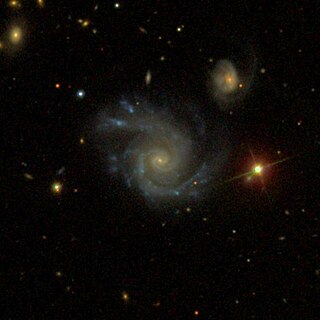
NGC 5829 is a spiral galaxy located in the constellation Boötes. It is 281 million light-years away from Earth and was discovered by astronomer, Edouard Stephan in May 1882.

NGC 4612 is a barred lenticular galaxy located about 57 million light-years away in the constellation of Virgo. NGC 4612 was discovered by astronomer William Herschel on January 23, 1784. The galaxy is a member of the Virgo Cluster.

NGC 5774 is an intermediate spiral galaxy approximately 71 million light-years away from Earth in the constellation of Virgo. It was discovered by Irish engineer Bindon Stoney on April 26, 1851.

NGC 502, also occasionally referred to as PGC 5034 or UGC 922, is a lenticular galaxy in the constellation Pisces. It is located approximately 113 million light-years from the Solar System and was discovered on 25 September 1862 by German astronomer Heinrich Louis d'Arrest. When the Morphological Catalogue of Galaxies was published between 1962 and 1974, the identifications of NGC 502 and NGC 505 were reversed. In reality, NGC 502 is equal to MGC +01-04-041 and not MCG +01-04-043 as noted in the catalogue.
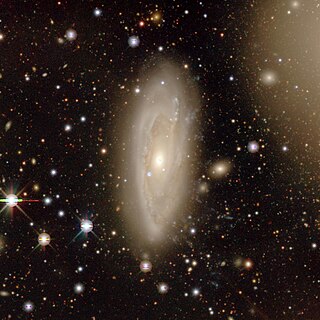
NGC 3312 is a large and highly inclined spiral galaxy located about 194 million light-years away in the constellation Hydra. The galaxy was discovered by astronomer John Herschel on March 26, 1835. It was later rediscovered by astronomer Guillaume Bigourdan on February 26, 1887. NGC 3312 was later listed and equated with IC 629 because the two objects share essentially the same celestial coordinates. NGC 3312 is the largest spiral galaxy in the Hydra Cluster and is also classified as a LINER galaxy.

NGC 1264 is a low-surface-brightness barred spiral galaxy located about 145 million light-years away in the constellation Perseus. The galaxy was discovered by astronomer Guillaume Bigourdan on October 19, 1884. NGC 1264 is a member of the Perseus Cluster.
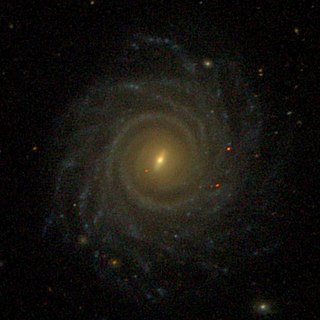
NGC 3883 is a large low surface brightness spiral galaxy located about 330 million light-years away in the constellation Leo. NGC 3883 has a prominent bulge but does not host an AGN. The galaxy also has flocculent spiral arms in its disk. It was discovered by astronomer William Herschel on April 13, 1785 and is a member of the Leo Cluster.

NGC 538 is a barred spiral galaxy in the constellation of Cetus. It is located about 250 million light-years from the Milky Way with a diameter of approximately 95,000 ly. NGC 538 was discovered by the American astronomer Lewis Swift in 1886.
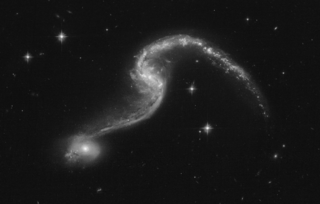
NGC 646 is a large barred spiral galaxy located in the constellation Hydrus. Its speed relative to the cosmic microwave background is 8,145 ± 19 km/s, which corresponds to a Hubble distance of 120.1 ± 8.4 Mpc. NGC 646 was discovered by British astronomer John Herschel in 1834. It forms an interacting galaxy pair.

NGC 5940 is a barred spiral galaxy located in the Serpens constellation. The galaxy was found on April 19, 1887, by Lewis Swift, an American astronomer. NGC 5940 is located 500 million light-years away from the Milky Way and it is approximately 140,000 light-years across in diameter.

NGC 5539 is a large lenticular galaxy in the Boötes constellation. It is located 857 million light-years away and was discovered by John Herschel on 24th April, 1830. According to Herschel, he found it quite large and irregular. NGC 5539 is about 273,000 light-years in diameter, meaning it is much larger compared to the Milky Way and its neighbor, the Andromeda Galaxy. It is the brightest cluster galaxy in Abell 1890.
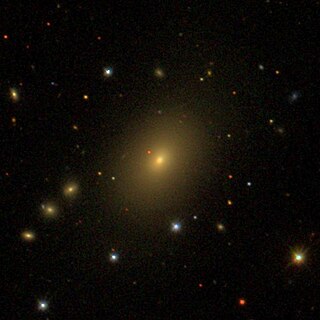
NGC 2484 is a large lenticular galaxy located in the Lynx constellation. It is situated 560 million light-years away from the Milky Way, which given by its apparent dimensions, means NGC 2484 is around 304,000 thousand light-years across. It is classified a Fanaroff and Riley radio galaxy.

NGC 2485 is a spiral galaxy located in the constellation of Canis Minor. It is located 233 million light-years away from Earth and has an estimated diameter of 110,000 thousand light-years. NGC 2485 was discovered on March 25, 1864, by Albert Marth and has an approximate surface magnitude of 13.08.

NGC 2494 is a lenticular galaxy located in the Monoceros constellation. It is 183 million light-years away and about 58,000 light-years in diameter.

NGC 5008 is a massive barred spiral galaxy located in the Boötes constellation.
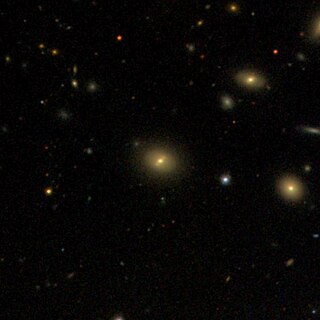
IC 4026 is a lenticular galaxy located in Coma Berenices. It is located 315 million light-years away from the Solar System and has an approximate diameter of 70,000 light-years which is less the size of the Milky Way. IC 4026 was discovered on May 11, 1896, by astronomer Hermann Kobold and is a member of the Coma Cluster. It has a surface brightness of 11.99 mag/arcsecs meaning it is a high surface brightness galaxy.

IC 2628 is a type SBa barred spiral galaxy with a ring located in Leo constellation. It is located 600 million light-years from the Solar System and has an approximate diameter of 135,000 light-years. IC 2628 was discovered on March 27, 1906, by Max Wolf and is classified as a ring galaxy due to its peculiar appearance. The galaxy has a surface brightness of magnitude 23.8 and located at right ascension (11:11:37.8) and declination (+12:07:21) respectively.

NGC 3750 is a lenticular galaxy with a bar located in the constellation of Leo. It is located 450 million light-years from the Solar System and was discovered by Ralph Copeland on February 9, 1874.
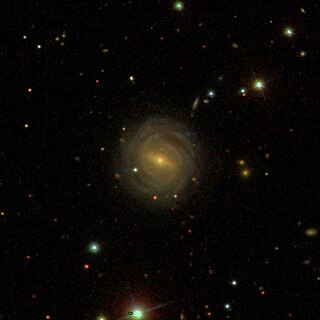
NGC 7222 is a large barred spiral galaxy with a ring structure, located in the constellation Aquarius. It is located 570 million light-years away from the Solar System and was discovered by German astronomer, Albert Marth on August 11, 1864.

NGC 1024 is a large spiral galaxy of type Sab located in the constellation Aries. Its speed relative to the cosmic microwave background is 3,306 ± 16 km/s, which corresponds to a Hubble distance of 48.8 ± 3.4 Mpc. NGC 1024 was discovered by German-British astronomer William Herschel in 1786.




















